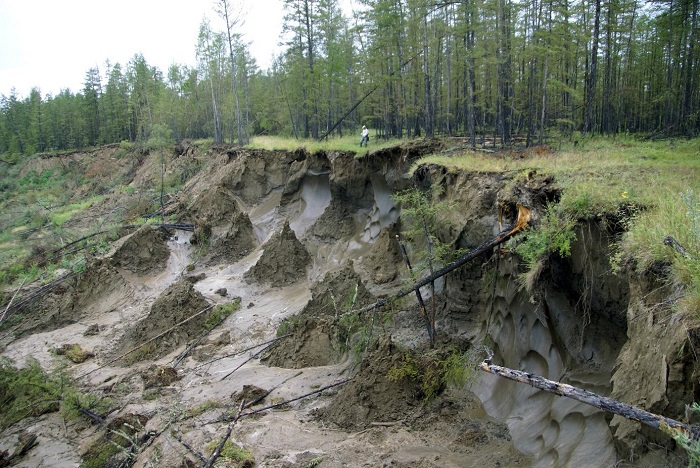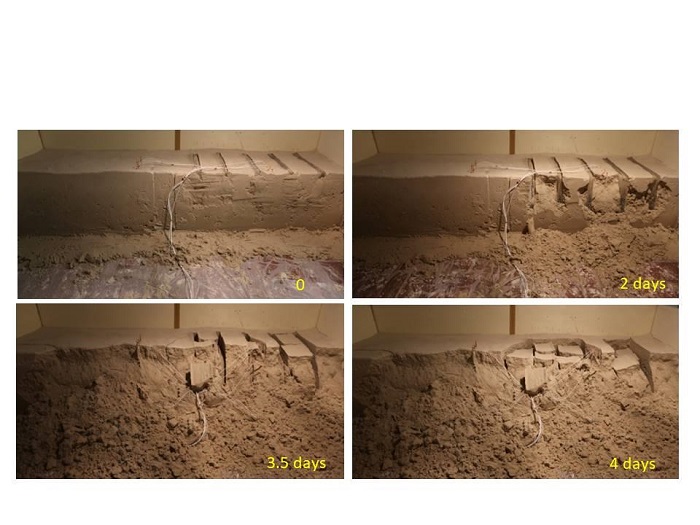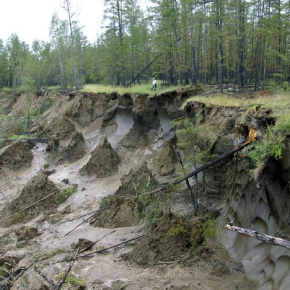
Getting to the bottom of Arctic landslides
Erosion of the frozen soil of Arctic regions, known as permafrost, is creating large areas of subsidence, which has catastrophic impact in these regions sensitive to climate change. As the mechanisms behind these geological events are poorly understood, researchers from the Géosciences Paris Sud (GEOPS) laboratory (CNRS / Université Paris-Saclay), in cooperation with the Melnikov Permafrost Institute in Yakutsk, Russia, conducted a cold room1
simulation of landslides, or slumps, caused by accelerated breakdown of the permafrost. The scientists demonstrated that the ice content of permafrost greatly contributes to soil collapse. They noted that very heterogeneous frozen soils, characterized by the presence of vertical ice wedges,2
undergo major deformation during thaws. At those times, warm air circulates more freely, which furthers slumping. Such erosion during the warming phase, coupled with the input of excess water, accelerates melting and causes subsidence at the base of the ice layer. The rapid breakdown of these ice-rich soils modifies the chemistry of surface water and results in the release of greenhouse gas, which only reinforces the process by accentuating climate change. Thus it is especially useful to study and monitor slumping to understand and predict future climate trends. The team’s findings are published in Geophysical Research Letters (December 7, 2020).


A video is available from Alexiane Agullo: alexiane.agullo@cnrs.fr
Crédit : © F. Costard, GRL/AGU 2020, Article ID: GRL_61641
- 1The researchers used the GEOPS (CNRS / Université Paris-Saclay) cold room, which is dedicated to physical modelling of periglacial geomorphological phenomena. They recreated an ice-rich Arctic permafrost, weighing over a ton, by freezing sand and integrating ice heterogeneities. Their experiments made use of temperature sensors to study changes in the freezing and thawing front over time.
- 2Each winter the soil contracts to leave cracks that fill up with water in the summer, and this water freezes to form ice wedges. The cycle continues from season to season, adding further mass to the ice wedges.
Retrogressive thaw slumps on ice-rich permafrost under degradation:Results from a large-scale laboratory simulation. F. Costard, L. Dupeyrat, A. Séjourné, F. Bouchard, A. Fedorov, and B. Saint Bézar. December 7, 2020, Geophysical Research Letters. DOI : 10.1029/2020GL091070. https://agupubs.onlinelibrary.wiley.com/doi/10.1029/2020GL091070


